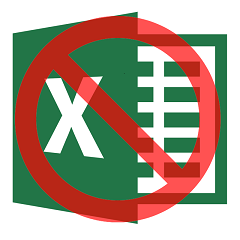Inventory Costs – A Quick Overview
Inventory costs make up a substantial part of any manufacturing or distributing company’s total expenses. To ensure the good financial health of your business, it is necessary to know how to make sense of these expenses and how to balance them.

You can also listen to this article:
What are Inventory Costs?
Inventory costs are all expenses that are incurred by procuring, storing, and managing inventory.
In companies that deal with products, either manufacturing or just selling them, inventory makes up a substantial part of the balance sheet. According to “Quantitative Analysis for Management” by Barry Render, Ralph Stair, and Michael Hanna, inventory can represent as much as 50% of a company’s total invested capital, making it one of the most expensive and important assets.
But the actual cost of purchasing the inventory is not the only cost associated with inventory. Adding running expenses for labor, inventory space, shrinkage, etc. into the mix will give a noticeable boost to the already high costs. This is one of the best reasons why proper inventory management and control techniques should be used – to minimize inventory and the costs it incurs.
Types of Inventory Costs
The most straightforward inventory cost, the cost of capital, includes the purchasing price of the goods as well as any interest or other costs incurred if the company takes out a loan to pay for its stock. Other costs related to inventory can be categorized into three basic groups: holding costs, ordering costs, and shortage costs. These categories can be broken down into separate, more specific costs.
Holding costs
Inventory holding costs are all the costs related to storing inventory. These include:
- Storage costs. These are the costs associated with the space you store your inventory in, including rent, utilities, and insurance.
- Labor costs. These are made up of the salaries of the inventory employees that receive, pick, dispatch, manage, and audit inventory, and those that deal with the maintenance and cleaning of the inventory spaces.
- Opportunity costs. Those costs are incurred when too much cash is tied up in inventory, which may prevent the company from investing that money into new opportunities such as new employees, marketing, innovation etc.
- Depreciation. Naturally, the value of a company’s inventory can decrease in time, which in turn incurs depreciation costs.
- Obsolescence. When the goods in inventory depreciate until they have no value (e.g. when perishable goods expire), they start representing a negative value because they still take up inventory space and working time of the inventory employees. This is called dead stock and it needs to be quickly identified and dealt with.
- Shrinkage. Costs related to inventory loss due to theft, fraud, damage, or mistakes in keeping records are called shrinkage costs.
Ordering costs
Ordering costs are made up of expenses incurred with compiling and placing orders, as well as those costs related to transporting the goods to the facility:
- Labor costs incurred in the purchasing department, i.e. for preparing purchase orders, sourcing suppliers, communication, etc.
- Transportation costs if the company has to pay for the transportation of the goods (e.g. when the size of the order is not sufficient for the supplier to provide free transportation).
Stockout costs
Also called shortage costs, the stockout costs are incurred when sales opportunities are missed and workers are idle due to insufficient levels of inventory. These include:
- Production stoppages. Labor costs and factory overhead keep accumulating whether or not any actual work is being done.
- Emergency shipments. Suppliers might charge extra for more time-sensitive deliveries than what is specified in your contract.
- Loss of customer loyalty. Being unable to fill customer orders could make your clients turn to a competitor, costing you valuable business.
How to reduce Inventory Costs?
Although inventory will always be one of the most expensive parts of doing business, there are ways to minimize the costs related to it. The best way to do this is to only hold onto as much and as little inventory as is needed at a time. This means inventory needs to be highly optimized and an inventory management software needs to be implemented.
In inventory optimization, the two basic questions are:
- When to order?
- How much to order?
Finding answers to these questions always requires compromising between some of the aforementioned inventory costs. “When to order?” needs to balance out inventory holding costs and stockout costs; “How much to order?” needs to find a middle ground between holding costs and ordering costs. Here are some of the best practices that can help you balance your inventory costs:
Track your inventory
Inventory tracking means recording and monitoring the movement of goods in the company. Making sure that every item is tracked provides you with a good overview of how much stock you have and where different SKUs are located as well as which products sell well and which ones are just sitting in the stockroom unused. It also allows you to avoid the depreciation, expiration, and obsolescence of goods.
Read more about Inventory Tracking.
Switch from spreadsheets to an ERP/MRP software
Spreadsheets are a feasible way for managing your inventory only when you are just starting out or if your inventory is very small. But if you already operating a serious business, it is time to upgrade to an ERP/MRP software. These systems automate a lot of the communication and data entry taking place across the business, reduce human errors, and collect large amounts of data that you can use to make better-informed decisions regarding your inventory.
Use data to create accurate forecasts
The data collected by an ERP system allows you to create accurate forecasts regarding how much merchandise you are going to need in a set period to respond to regular demand. Knowing how much to order at any given time helps avoid both stockouts as well as overstocking by keeping your inventory minimized yet retaining the ability to fulfill orders.
Set reorder points and safety stocks
Reorder point (ROP) is a method of determining the most feasible time to replenish your stock. When your inventory levels drop to a certain point (the ROP), it is time to place another order.
Safety stock, however, is a buffer of inventory that is held just in case for situations where demand is higher than expected, or when a delivery from a supplier is late. When this occurs, the buffer provides you with the means to continue operating without disruption.
Organize your stockroom
Keeping your warehouse physically organized is an essential prerequisite of efficient inventory management. In a neatly organized warehouse, employees can move around quickly and safely, which means faster picking. Having the inventory items stored in an orderly fashion, however, could save a lot of inventory space.
Read more about Warehouse Organization.
Count your stock regularly
Doing stocktakes helps you discover obsolete, damaged, or expired goods that have somehow been overlooked. But it can also aid you in identifying theft, fraud, as well as record-keeping errors. Due to this, it is important to perform inventory counts regardless of whether you use an ERP system or not. In order not to disrupt the work in your whole business with frequent physical inventory counts, you might want to opt for cycle counts.
Use inventory control techniques
Using inventory control techniques such as Just in Time or Economic Order Quantity (EOQ) allows you to review your ordering practices as well as keep your inventory and the associated costs minimized.
Just in Time
Just in Time (JIT) is centered on purchasing and holding the bare minimum needed to operate in short term. This means that orders are placed more frequently, but for smaller quantities. However, the JIT model might create problems when there are fluctuations in demand or when there is a sudden disruption in the supply chain. Nevertheless, in case of steady demand and supply, the JIT approach can drastically reduce inventory costs and improve the cash flow of a business.
Economic Order Quantity
Economic Order Quantity (EOQ) is an inventory control technique where a company calculates the ideal quantities of goods to be purchased within a single order. This is done to ensure sufficient inventory levels while minimizing the costs of buying, receiving, and storing the goods. However, the EOQ only works when demand does not fluctuate.
Use barcoding
Using barcodes and barcode scanners to track inventory movements drastically reduces the amount of time spent on data entry. It also helps to minimize the risk of human errors and to ensure quick and accurate bookkeeping. All of these aspects combined reduce inventory costs related to clerical tasks that are easy to automate.
Read more about Barcode Inventory Systems.
Key takeaways
- Inventory costs are all expenses that are incurred by procuring, storing, and managing inventory.
- Even though the price you pay for stock to your suppliers can represent up to 50% of the company’s total capital investments, there are also other expenses that need to be tracked and balanced.
- Inventory holding costs consist of storage costs, stockroom labor costs, opportunity costs, as well as costs related to the depreciation, obsolescence, and shrinkage of inventory.
- Ordering costs include costs related to the transportation of the goods into your facility, as well as those incurred by the activities of the procurement department such as supplier sourcing and order placement.
- Stockout costs (also known as shortage costs) are the costs incurred with employee idle time in the facility, emergency shipments, and the loss of opportunity due to not being able to fulfill orders, which may ultimately lead to loss of customer loyalty and damage to the reputation of the company.
- The goal of inventory optimization is to find a balance between the different inventory costs.
- Some of the best ways to optimize your inventory costs are tracking your inventory (preferably with an ERP system that supports barcoding), using data to create accurate demand forecasts, setting mathematically defined reorder points and safety stocks, physically organizing your stockroom, doing regular inventory counts, and using inventory control techniques such as just-in-time or Economic Order Quantity (EOQ).
You may also like: What Is Vendor-Managed Inventory and How to Implement It?




